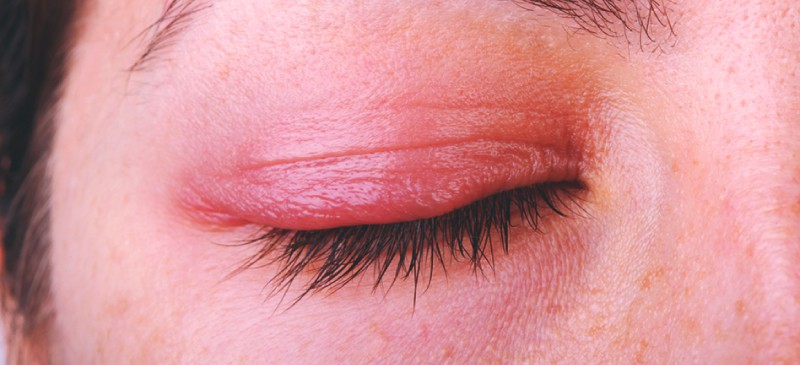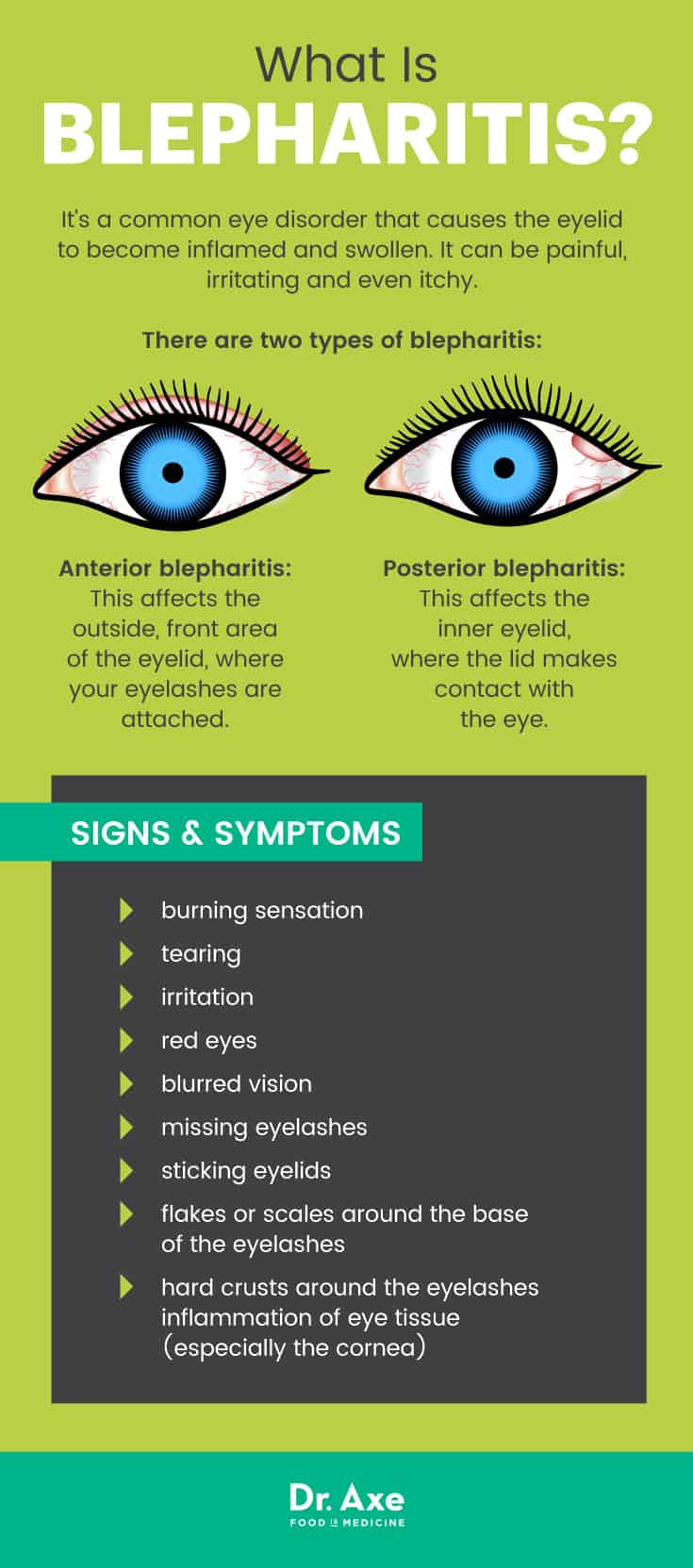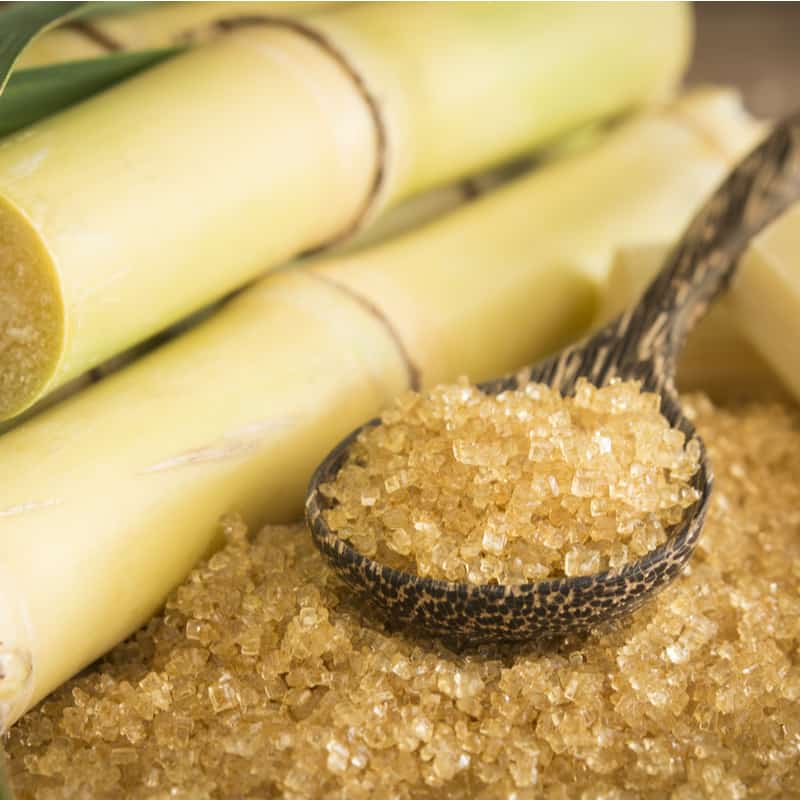This Dr. Axe content is medically reviewed or fact checked to ensure factually accurate information.
With strict editorial sourcing guidelines, we only link to academic research institutions, reputable media sites and, when research is available, medically peer-reviewed studies. Note that the numbers in parentheses (1, 2, etc.) are clickable links to these studies.
The information in our articles is NOT intended to replace a one-on-one relationship with a qualified health care professional and is not intended as medical advice.
This article is based on scientific evidence, written by experts and fact checked by our trained editorial staff. Note that the numbers in parentheses (1, 2, etc.) are clickable links to medically peer-reviewed studies.
Our team includes licensed nutritionists and dietitians, certified health education specialists, as well as certified strength and conditioning specialists, personal trainers and corrective exercise specialists. Our team aims to be not only thorough with its research, but also objective and unbiased.
The information in our articles is NOT intended to replace a one-on-one relationship with a qualified health care professional and is not intended as medical advice.
Get Rid of Blepharitis: 7 Natural Remedies for an Inflamed Eyelid
August 3, 2018

Blepharitis is a common eye disorder. A number of factors that lead to inflammation of the eyelid and crusty eyelashes can cause it. Researchers have suggested that it can be considered the most “under-diagnosed, undertreated and underappreciated eye disease worldwide.” (1)
Blepharitis is associated with health issues like scalp dandruff, rosacea and dry eyes. If left untreated, blepharitis can lead to severe eye conditions like vision loss, inflammation of the cornea and even eyelid cancer. There are some straight-forward ways to prevent blepharitis. And if you have already developed the condition, there are natural remedies that will help to improve symptoms and address the root of the problem.
What Is Blepharitis?
What is blepharitis of the eye? It’s a common eye disorder that causes the eyelid to become inflamed and swollen. It can be painful, irritating and even itchy. And for some people, blepharitis can lead to more severe symptoms like blurred vision and inflammation of eye tissue.
We all have bacteria on the surface of our skin. But for some people, the bacteria thrives at the base of the eyelashes. This can cause irritation, inflammation and other blepharitis symptoms.
There are two types of blepharitis (2):
- Anterior blepharitis: This affects the outside, front area of the eyelid, where your eyelashes are attached. Bacteria, mites or dandruff that spreads to the eyelashes can cause anterior blepharitis.
- Posterior blepharitis: This affects the inner eyelid, where the lid makes contact with the eye. Posterior blepharitis is commonly associated with meibomian gland dysfunction. This means an issue with the tiny oil glands that line the margin of the eyelids that touch when your eyes are closed. When the glands aren’t secreting enough oil because they are plugged, they can get crusty and cause irritation.
Is there a cure for blepharitis? Well, it depends on the type of blepharitis. Poor hygiene usually causes anterior blepharitis and it can be cured. But posterior blepharitis is an incurable disease. It can only be managed with remedies that regulate the meibomian glands. When blepharitis becomes a chronic condition, which is common, it requires daily attention and eyelid scrubs. When blepharitis isn’t managed, it can lead to more serious conditions like vision loss, inflammation of the cornea and even eyelid cancer.
Signs and Symptoms of Blepharitis
The symptoms of blepharitis can vary depending on the cause, type and severity of the condition. The most common symptoms of blepharitis include (3):
- burning sensation
- tearing
- irritation
- red eyes
- blurred vision
- missing eyelashes
- sticking eyelids
- flakes or scales around the base of the eyelashes
- hard crusts around the eyelashes
- inflammation of eye tissue (especially the cornea)
If you develop one of these symptoms, that doesn’t necessarily mean that you have blepharitis. However, it’s a good idea to make an appointment with your ophthalmologist for a full eye exam, especially if you’re experiencing more than one of these symptoms.
There are some health complications or conditions that are associated with blepharitis, including the following:
- Stye: A stye forms when the glands along your eyelids become clogged and infected. It’s a small, red lump on the eyelid or around the eye that’s painful and sometimes itchy. A stye is caused by an acute infection of the oil glands that are in the eyelids, so to get rid of a stye you usually have to kill the bacteria that has infected the area.
- Chalazion: A chalazion is similar to a stye in that it’s also caused by inflammation of the eyelid’s oil glands and it causes a red lump on the eyelid. But a chalazion is usually painless. And it tends to be larger than a typical stye, feeling like a small bead in your eyelid.
- Eyelash problems: When left untreated, blepharitis can cause misdirected eyelashes, meaning they grow abnormally, or cause your eyelashes to fall out.
- Excess tearing: Irregular oil secretions that result from debris or flakes accumulating in the tear film can lead to excess tearing.
- Dry eye: Decreased oil secretions that are caused by an abnormality with the meibomian glands can affect the amount of oil in your tears and lead to dry eye.
- Secondary infection: Touching and rubbing the infected area of the eyelid can cause a secondary infection because of the spread of bacteria. It’s important to avoid touching or rubbing your eyes, especially if you haven’t washed your hands recently.

Causes and Risk Factors
Anterior blepharitis — which affects the outside of the eyelid near the eyelashes — is usually caused by staph bacteria and scalp or eyebrow dandruff (called seborrheic blepharitis). When these bacteria around the face and eyelids begin to grow and become excessive, or the eyelid overreacts to their presence, an infection may occur. The bacterial growth associated with anterior blepharitis is commonly due to poor hygiene. This allows bacteria to live and grow in the folds and crevices of the eyelids. The bacteria causes inflammation, redness, burning and stinging around the eyelid. (4)
Sometimes, although this is less common, allergies or a mite infestation of the eyelashes can lead to anterior blepharitis. If you are allergic to the bacteria or chemicals that are used on the eyes (like those found in eye makeup or lotions), you may develop blepharitis symptoms. An eyelash mite called demodex can also infest the eyelid margins and eyelashes, causing irritation and redness. Although demodex mite infestation usually remains asymptomatic, when they are present in high densities or affect someone with an immune imbalance, they can cause a range of dermatological conditions, including blepharitis. (5)
Posterior blepharitis, which affects the moist, inner part of the eyelid, is caused by issues with the oil glands (called meibomian) in the eyelid. When the glands of the eyelids irregularly produce oil, this creates a favorable environment for bacterial growth and infection. It also affects the stability of your tears because without the oily layer in tears, they evaporate quickly and can cause dry eyes. Skin conditions like ocular rosacea and scalp dandruff can also cause posterior blepharitis.
Ocular rosacea is a rosacea subtype that affects the eyes and eyelids. Although medical experts don’t know exactly what causes rosacea, it seems to be triggered by heightened inflammation and an overactive immune system. Although rosacea is considered a skin condition, it affects the eyes in 58 to 72 percent of cases. Research shows that about one-third of patients with ocular rosacea develop potentially sight-threatening inflammation of the cornea. So early treatment is extremely important. (6)
People who have oily skin, dry eyes or dandruff are at a greater risk of developing blepharitis. To prevent or treat blepharitis, these conditions should be resolved first. Sometimes, it’s a matter of proper hygiene and choosing the right skin care products for your skin type.
Related: How to Get Rid of Eye Boogers
Conventional Treatment
Blepharitis treatment depends on the cause of the condition. Generally, blepharitis treatment is aimed at preventing irritation to the surfaces of the eyes and controlling inflammation.
Artificial tear solutions or lubricating ointments are sometimes prescribed to reduce irritation to the eyes and eyelids. To treat ocular rosacea, a leading cause of blepharitis, topical and systemic anti-inflammatory drugs are commonly prescribed. Corticosteroids are also used to improve the symptoms of blepharitis, especially when combined with topical antibiotics. Although this combination can bring on a quick relief of symptoms, long-term use can lead to some harmful side effects. (7)
Some topical antibiotics that are commonly prescribed include erythromycin or bacitracin ointment. These are applied directly to eyes with eyedrops or by wiping the ointment across the closed eyelid near the eyelashes.
Tetracycline is an antibiotic that’s often used to fight a bacterial infection that’s causing blepharitis. Tetracycline is used to treat bacterial infections of the skin and other body systems, such as the urinary tract, genitals and respiratory system. Taking tetracycline can lead to common side effects, including nausea, vomiting, upset stomach, diarrhea and sores or swelling. This medication should not be taken by children under the age of 8 or women who are pregnant or breastfeeding. (8)
Researchers have also noted that taking antibiotics to treat blepharitis may alter the patient’s flora and favor excessive colonization of bacterial and fungal microbes. This increases the likelihood of developing blepharitis (and other conditions) again. (9)

7 Natural Blepharitis Treatments
1. Use a Warm Compress
One of the goals in treating blepharitis is to soothe the inflamed eyelid and remove the crust that has built up on the eyelid and eyelashes. Using a warm compress can help to loosen the crust and it brings blood flow to the eyelid, which helps to speed healing.
To do this, use a clean washcloth and wet it with warm water. Then wring it out and place it over the affected eye for 10 to 15 minutes. Do this about three times daily to encourage drainage, reduce inflammation and speed up the healing process. If that alone doesn’t remove the dry flakes, use a clean cotton pad with water and a gentle shampoo to massage the area and moisten the flakes. Then, once the eyelashes are dry, carefully use a cotton swab to remove the flakes. Repeat this regimen daily until the crust or flakes stop developing. (10)
2. Try Black Tea
Applying a warm black teabag on the infected eye can serve as a natural blepharitis treatment because black tea has anti-inflammatory and antibacterial activities. Research suggests that black tea has phenolic compounds and tannins that have the ability to inhibit the growth of bacteria. (11)
Simply place the black teabag in boiling water so that it begins to steep. Then wait for it to cool down, squeeze it to remove the water and place it on your closed eyelid. Let the teabag rest over the inflamed eyelid for about 10 minutes and then throw it in the garbage.
3. Use Tea Tree Oil
Tea tree oil has anti-inflammatory, antibacterial and antimicrobial effects. It can be used to kill demodex mites that infest the eyelids and eliminate bacteria from the area. Tea tree can also soothe dry, flaking skin and remove dandruff. (12) A 2012 study found that eyelid scrubbing with tea tree oil for one month significantly reduced the demodex mite count in patients with blepharitis. (13)
When applied directly to the skin, tea tree can be irritating for some people, so I recommend that you dilute it with a carrier oil, like coconut oil. Add 2–3 drops of tea tree and a half teaspoon of coconut oil to a clean cotton pad. Apply it to the area of concern.
4. Avoid Wearing Eye Makeup and Contact Lenses
Using eye makeup and contact lenses makes proper eyelid hygiene more difficult and can delay the healing process. Until blepharitis is treated, stop wearing eye makeup and use your eyeglasses instead of contact lenses. In fact, it’s a good idea to wear a fresh pair of contact lenses once the infection has healed because the old pair might be contaminated with bacteria.
5. Treat Dandruff
Dandruff on the scalp causes redness and flaking that can spread and cause greasy scaling on the eyebrows, face and even the side of your nose. To get rid of dandruff that causes blepharitis, you can use natural remedies like coconut oil, essential oils, probiotics and omega-3 fatty acids. (14)
My Homemade Itchy Scalp Shampoo is made with ingredients that kill bacteria, reduce inflammation and moisturize the scalp. Raw honey, apple cider vinegar, coconut oil, tea tree oil and rosemary oil make this toxin-free shampoo a natural and safe way to remove dandruff that can cause blepharitis.
6. Eat Anti-Inflammatory Foods
Sticking to a diet made up of anti-inflammatory foods will help to improve blepharitis symptoms naturally by reducing systemic inflammation and treating conditions that are associated with blepharitis, like rosacea.
The best foods for healing blepharitis include:
- Omega-3 foods: Eating plenty of omega-3 foods, like wild-caught salmon, wild mackerel, chia seeds, flaxseeds and walnuts, helps to reduce inflammation and boost the immune system so that it can react properly to bacteria and mites.
- Organic fruits and vegetables: Fruits and vegetables contain anti-inflammatory compounds and antioxidants. They also help to boost the immune system and rebuild healthy skin cells by providing important eye vitamins like vitamins A, C and E.
- Healthy fats: Foods like avocado, nuts, seeds, coconut oil and olive oil reduce systemic inflammation and help to heal the skin.
If you don’t consume enough omega-3 foods, consider taking a daily fish oil supplement. Fish oil benefits include its ability to reduce inflammation, nourish the skin and treat dandruff. Research shows that consuming omega-3s helps to increase the fatty acid saturation content in meibum. This helps to improve dry eye symptoms that can lead to blepharitis. (15)
7. Keep Blinking
It may sound funny that you need to practice blinking exercises. But blinking actually decreases with age and when you’re engaged in near-vision tasks, like using your computer and phone. Blinking helps the meibomian glands to secrete oil, which is important in order to avoid a blockage or abnormality that leads to dry eye and blepharitis symptoms. For those with posterior blepharitis, concentrate on blinking at least 20 times, four times a day to increase the secretion of oil that keeps your eyes lubricated. (16)
How to Prevent Blepharitis
To prevent the spread of bacteria and eyelash mites that can cause blepharitis, you need to keep your eyelids clean and avoid potential irritants or allergens that lead to inflammation and irritation of the eyelids. Here are some basic steps that you can take to prevent blepharitis from developing:
- Gently wash your eyelids with a mild, natural soap and warm water. It’s also important to avoid rubbing your eyes, especially if your hands aren’t clean or you haven’t washed them recently. If you are applying eye makeup or contact lenses, make sure to wash your hands first.
- Use natural moisturizers and cosmetic products that are free from chemicals and less irritating to the skin, such as my lavender and coconut oil Moisturizer for Dry Skin or this DIY Foundation Makeup recipe.
- Treat scalp dandruff immediately, before it spreads to your eyes and face.
- Replace your eye makeup every six months, especially mascara because you apply it directly to your eyelashes.
- Clean and store your contact lenses properly. Daily or monthly contact lenses are less likely to build bacteria than long-term lenses.
- Avoid potential allergens that can lead to inflammation, such as gluten, shellfish, nuts, eggs and dairy. If you suspect having food allergies or sensitivities, try doing an elimination diet to narrow down what might be causing these symptoms.
Precautions
See your ophthalmologist if you notice any blepharitis signs or symptoms. You can speak to your doctor about trying a natural blepharitis treatment before turning to antibiotics or corticosteroids. If you choose to use these natural remedies, do so under the care or guidance of your doctor.
Key Points
- Blepharitis is a common eye disorder that causes the eyelid to become inflamed and swollen. It can be painful, irritating and even itchy. And for some people, blepharitis can lead to more severe symptoms like blurred vision and inflammation of eye tissue.
- The most common symptoms include tearing, irritation, red eyes, sticking eyelashes, flakes and scales around the base of the eyelashes and hard crusts around the eyelashes.
- A number of issues, including a bacterial infection (usually staph bacteria), an infestation of eyelash mites, dandruff that has spread to the eyelashes or an irregularity with the oil glands of eyelids can all cause blepharitis.
- Conventional forms of treatment include artificial tea solutions, lubricating ointments, steroids, anti-inflammatory drugs and antibiotics.
7 Natural Treatments for Blepharitis
- To treat blepharitis naturally, kill bacteria or mites with tea tree oil or black tea.
- Use a warm compress to soothe inflammation and remove crust.
- Stop using contact lenses or eye markup until the infection has cleared.
- Stick to eating anti-inflammatory foods (like omega-3s).
- Treat scalp dandruff.
- Practice blinking exercises.
- The most important factor for preventing blepharitis is cleaning your eyes daily using a warm compress and gentle soap or shampoo.








